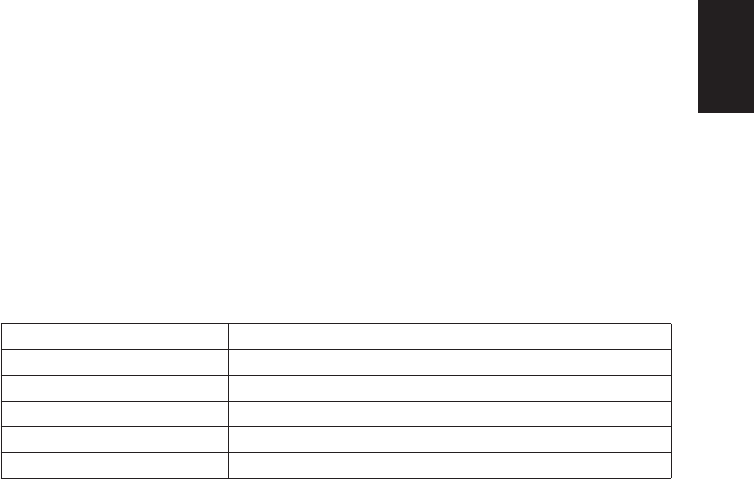
19
English
Composition
Do not use paper that has been coated or surface-treated and contains plastic or
carbon. The heat of fusing can cause such paper to give off harmful fumes.
Bond paper should contain at least 80% pulp. Not more than 20% of the total
paper content should consist of cotton or other fibers.
Paper size
Printer’s cassettes are available for the paper sizes listed in Table 2. The
dimensional tolerances are ±0.7 mm (±0.0276 inches) for the length and width.
The angle at the corners must be 90° ±0.2°.
Table 2 Paper Sizes for Printer’s Cassette Paper Feed
Printer’s cassette Size
Legal 8.5 × 14 in
Letter 8.5 × 11 in
ISO A4 210 × 297 mm
JIS B5 182 × 257 mm
ISO A5 148 × 210 mm
Smoothness
The paper should have a smooth, uncoated surface. Paper with a rough or sandy
surface can cause voids in the printed output. Paper that is too smooth, however,
can cause multiple feeding and fogging problems. (Fogging is a gray background
effect.)
Basis weight
Basis weight is the weight of a standard quantity of paper. In the traditional
system the standard quantity is a ream consisting of 500 sheets measuring 17 × 22
inches each. In the metric system the standard quantity is 1 square meter.
Paper that is too light or too heavy can cause misfeeding, jams, and premature
wear of the duplexer and the printer. Uneven paper weight can cause multiple
feeds, print defects, poor toner fusing, blurring, and other print quality problems.
The proper weight is 70 to 90 g/m
2
(19 to 24 lbs/ream).
Important Although the printer can print on lighter paper with the
basis weight of as low as 60 g/m
2
in simplex printing, duplex
printing is not possible with the paper weight of less than 70
g/m
2
.


















